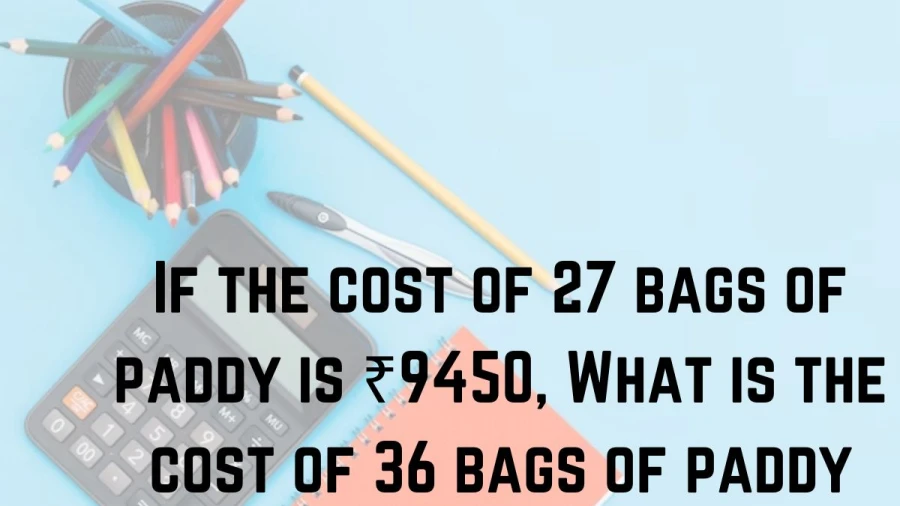If you happen to be viewing the article If the cost of 27 bags of paddy is ₹9450, What is the cost of 36 bags of paddy? ? on the website Math Hello Kitty, there are a couple of convenient ways for you to navigate through the content. You have the option to simply scroll down and leisurely read each section at your own pace. Alternatively, if you’re in a rush or looking for specific information, you can swiftly click on the table of contents provided. This will instantly direct you to the exact section that contains the information you need most urgently.
Calculate the cost of 36 bags of paddy by applying the given price for 27 bags at ₹9450.
If the cost of 27 bags of paddy is ₹9450, What is the cost of 36 bags of paddy?
The cost of 36 bags of paddy is Rs.12,600.
To find the cost of 36 bags of paddy, you can set up a proportion since the cost is directly proportional to the number of bags.
Let’s denote the cost of 36 bags of paddy as C.
Using the given information, we can set up the proportion:
(27 / 9450) = (36 / C)
To solve for C, we can cross multiply:
27C = 9450 * 36
27C = 340200
Now, divide both sides by 27 to solve for C:
C = 340200 / 27 = 12600
So, the cost of 36 bags of paddy is ₹12,600.
What is Proportionality in Mathematics?
In mathematics, proportionality refers to the relationship between two quantities where their ratios remain constant. This means that if you increase or decrease one quantity by a certain factor, the other quantity will also increase or decrease by the same factor. There are two main types of proportionality:
1. Direct Proportionality:
- Two quantities are directly proportional if their ratios are always equal. In other words, if you multiply one quantity by a constant, the other quantity will also be multiplied by the same constant to maintain the same ratio.
- Imagine you bake cookies and the recipe requires 2 cups of flour for every 3 eggs. This means the number of cups of flour and the number of eggs used are directly proportional. No matter how many cookies you make (doubling, tripling, etc.), the ratio of flour to eggs will always be 2:3.
2. Inverse Proportionality:
- Two quantities are inversely proportional if their product remains constant. This means that if you multiply one quantity by a certain factor, the other quantity will be divided by the same factor to keep the product constant.
- Think about the time it takes to finish a painting and the number of people working on it. If you have more people working (say, double the number), it will take half the time to finish the painting, keeping the total work done (painting x time) constant.
Understanding Proportionality:
- Proportionality is often expressed using ratios and proportions (equations where two ratios are equal).
- You can use the concept of proportionality to solve various problems, from simple recipe adjustments to complex scientific calculations.
- It’s an important concept in many areas of mathematics, including algebra, geometry, and trigonometry.
Thank you so much for taking the time to read the article titled If the cost of 27 bags of paddy is ₹9450, What is the cost of 36 bags of paddy? written by Math Hello Kitty. Your support means a lot to us! We are glad that you found this article useful. If you have any feedback or thoughts, we would love to hear from you. Don’t forget to leave a comment and review on our website to help introduce it to others. Once again, we sincerely appreciate your support and thank you for being a valued reader!
Source: Math Hello Kitty
Categories: Math

